Manatees – endangered gentle giants (16 pictures)
Massive yet gentle, manatees are endangered marine mammals. Sometimes called “sea cows,” they were once thought to be a bit dimwitted, but now are known to have a similar intelligence to dolphins. We fell in love with them while we were in Florida, so here’s look at these endearing, endangered gentle giants.
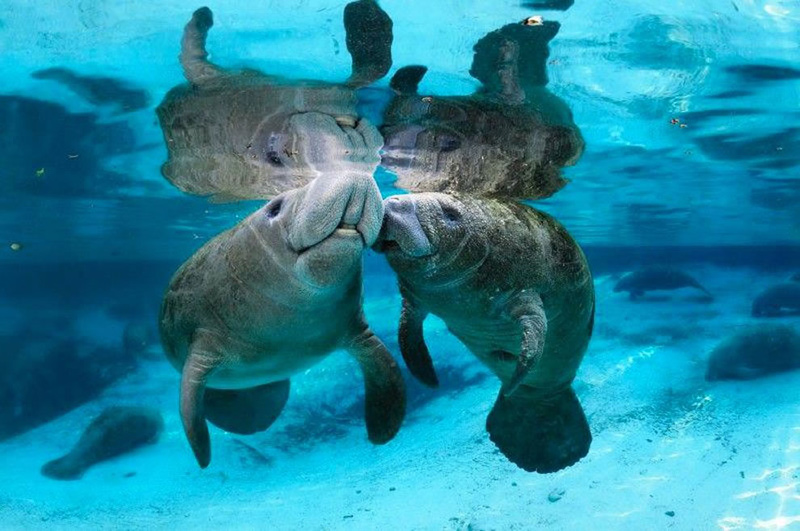
This was the 2nd place photo in America’s incredible National Wildlife Refuge System contest. The photographer took it at Crystal River National Wildlife Refuge. Photo by Carol Grant via National Wildlife Refuge Association
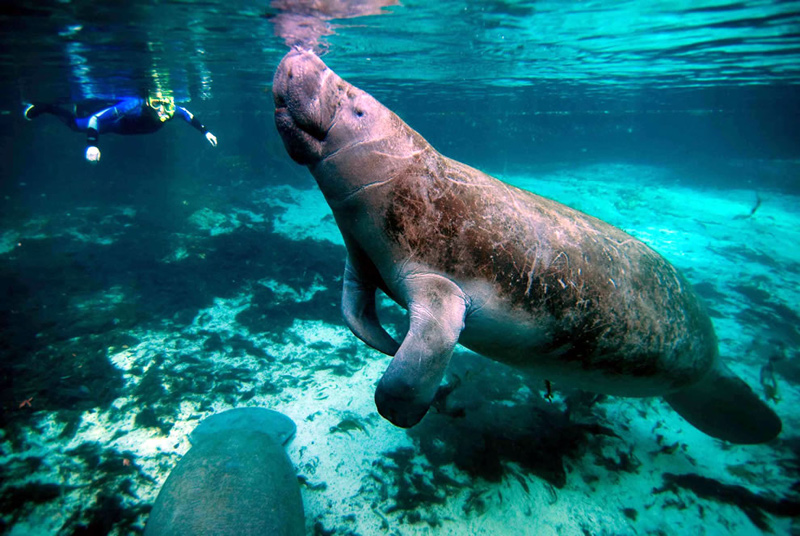
Swimming with manatees. Believe it or not, we saw a manatee and an alligator when visiting Kennedy Space Center. NASA has setup an amazing wildlife preservation there. Photo by Ramos Keith / U.S. Fish and Wildlife Service
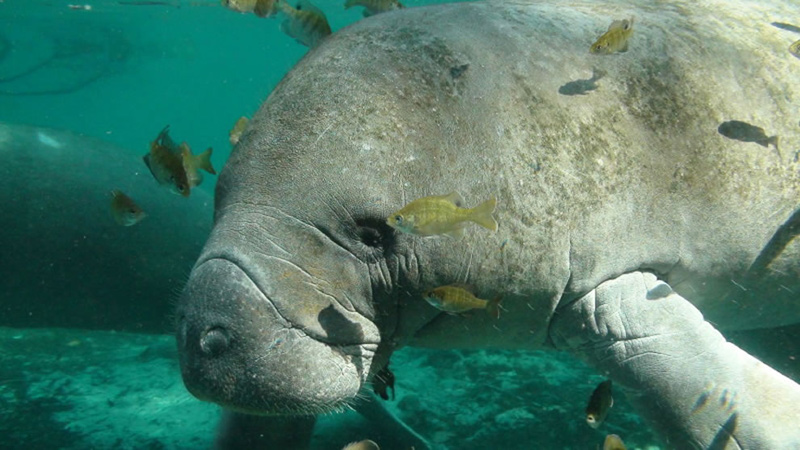
West Indian manatee. National Geographic wrote, “Manatees are born underwater. Mothers must help their calves to the surface so that they can take their first breath, but the infants can typically swim on their own only an hour later. Manatee calves drink their mothers’ milk, but adults are voracious grazers. They eat water grasses, weeds, and algae—and lots of them. A manatee can eat a tenth of its own massive weight in just 24 hours.” Photo by Tracy Colson / USFWS

NOAA reports that Red Tide (HAB conditions) off the coast of Florida have killed a record 174 endangered manatees thus far in 2013. Photo by NOAA
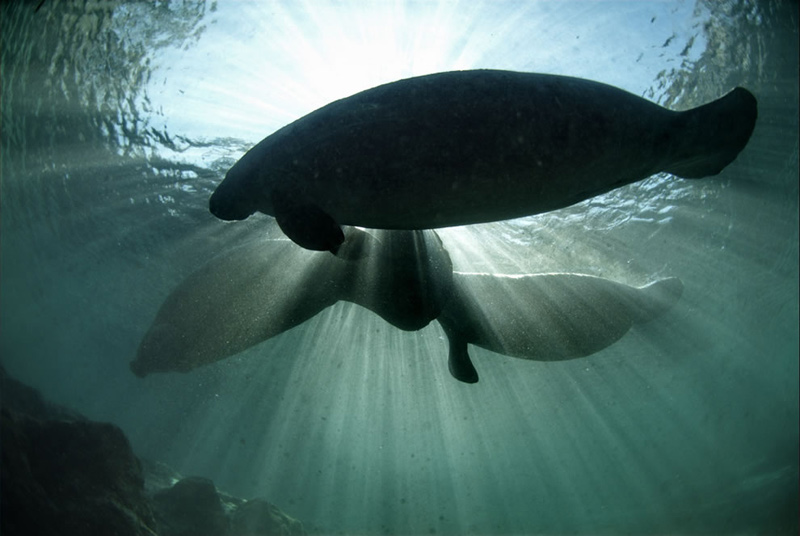
Sun-rays as manatees cross over the King Spring toward the manatee sanctuary’s shallow waters. Photo by David Hinkel / USFWS
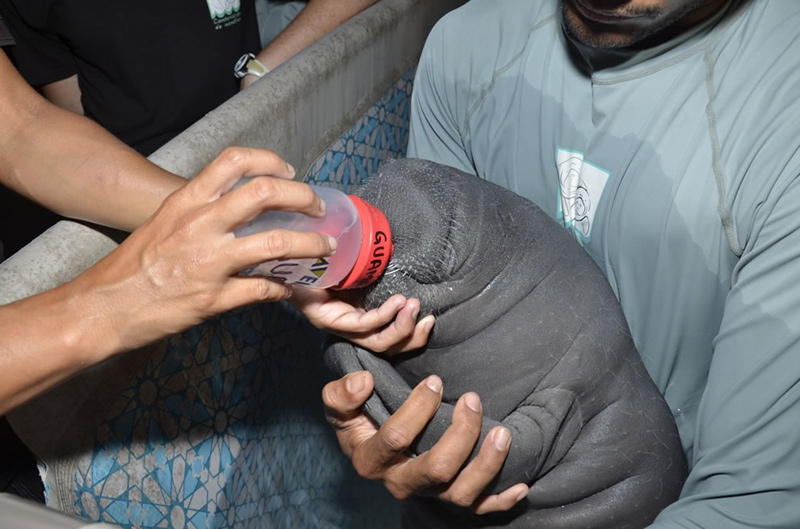
Guamá, orphaned manatee in Guantánamo Bay, Cuba, was bottle-fed and rehabilitated in Puerto Rico. Photo by Jan Paul Zegarra, Fish and Wildlife Biologist, USFWS
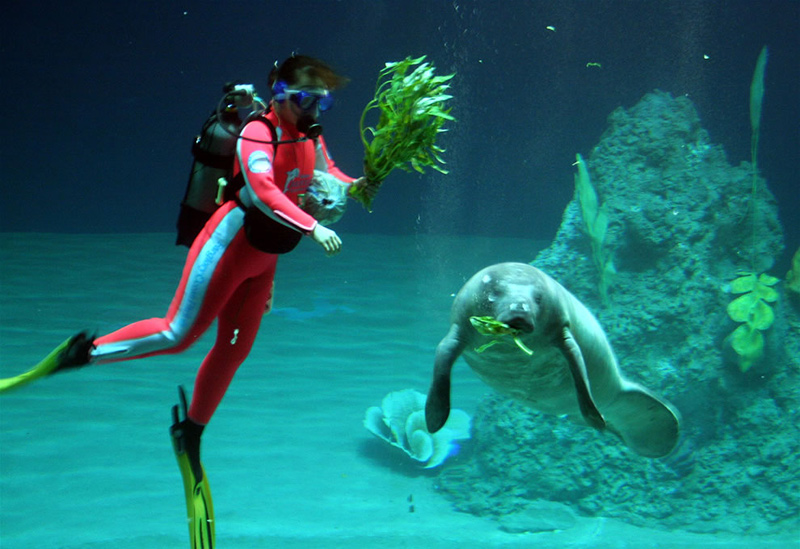
Diver feeding a baby manatee. Photo by kyhLiang

African manatee at Toba aquarium. Wikipedia states, “There are three accepted living species of Trichechidae, representing three of the four living species in the order Sirenia: the Amazonian manatee (Trichechus inunguis), the West Indian manatee (Trichechus manatus), and the West African manatee (Trichechus senegalensis).” Photo by pelican from Tokyo, Japan

Mid-January, manatees resting at Tarpon Hole (left) and King Spring (right) during a 30 degree F day. FWS explained that some manatees are tracked, but the population is usually observed from above. “Aerial surveys in Florida have counted up to 3,300 manatees statewide. In Puerto Rico, the population is estimated at between 150 and 350 animals.” Photo by Joyce Kleen /USFWS

Manatees at Three Sisters Springs. According to Wikipedia, “Manatees comprise three of the four living species in the order Sirenia. The fourth is the Eastern Hemisphere’s dugong. The Sirenia are thought to have evolved from four-legged land mammals over 60 million years ago, with the closest living relatives being the Proboscidea (elephants) and Hyracoidea.” Photo by Alex Mustard / Crystal River National Wildlife Refuge Complex

Crystal River National Wildlife Refuge, established in 1983, specifically protects the endangered West Indian manatee. Behavior and diet (FWS .pdf): The manatee maneuvers through the water moving its paddle-like tail up and down and steering with its flippers. It is very agile for such a large animal, sometimes somersaulting and doing barrel rolls in the water. Photo by David Hinkel / USFWS

Sea Cow nostrils. Photo by Timothy Wildey

According to the U.S. Fish and Wildlife Service (.pdf), “Christopher Columbus was the first European to report seeing a manatee in the New World. To Columbus, and other sailors who had been at sea for a long time, manatees were reminiscent of mermaids—the mythical half-fish, half-woman creatures of the ocean. Manatees are not fish, however, but marine mammals.” When you think about manatees, you probably think of those living in Florida. However, these West Indian manatees traveled to Georgia in late spring and early summer. Photo by Michael Gilbert, Crystal River National Wildlife Refuge Complex / USFWS

NOAA wrote, “A manatee, also known as a ‘seacow.’ These air-breathing herbivores are listed as a federally endangered species. Manatees are slow-moving and therefore unable to swim quickly away from boats; this often results in collisions that may cause injury or death to the creatures. In areas that are known manatee habitats, ‘no-wake’ signs are posted requiring boaters to slow down and produce only minimal wake.” Photo by NOAA’s National Ocean Service

Parker Manatee Aquarium, Bradenton, FL. Wouldn’t it be a shame if the only manatees that existed for your kids or grandkids to see were in captivity like zoos and aquariums, or “stuffed” in a museum exhibit? Photo by Jeff Stvan
